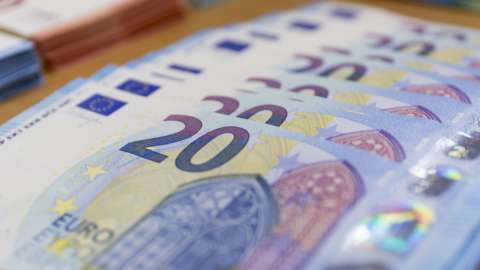The Draghi government leaves a legacy to Giorgia Meloni two treasuries for a total of 20 billion: 10 to be used by December for a new bill decree and 10 for the maneuver 2023. The budgetary space opened up thanks to a lower-than-expected deficit in both 2022 and 2023: in the April economic and financial document, the two data were expected respectively at 5,6 and 3,9%, while in the Update Note to Def approved yesterday by the CDM and validated on 23 September by the Parliamentary Budget Office fell at 5,1 and 3,4%. Two half point downward revisions that count each 10 billion. And in the first case the new government he won't even have to ask for authorization from Parliament: the 10 billion can be spent by raising the 2022 deficit from 5,1 to 5,6%, but the deviation is painless because the Chambers - in July and September, for the Aid bis and ter decrees - have already authorized a deficit at 5,6 ,XNUMX% and Brussels has given its approval.
Nadef: the revisions on GDP for 2022 and 2023
These numbers surprised many analysts, who expected a higher deficit for next year due to the heavy cut in growth forecasts: if the Def estimated for the GDP 2023 an increase of 2,4%, Nadef has demolished this data allo 0,6%. The review on 2022 is instead positive: by 3,1 to 3,3%.
Debt-GDP ratio down
At the same time, the forecasts on the ratio are also lightened debt-GDP, which this year is expected to drop to 145,4% from 150,3% in 2021, with a further drop in the coming years, reaching 139,3% in 2025.
Possible new deficit also in 2023
This scenario opens up various perspectives for the Meloni government. To the 10 billion for the 2023 maneuver, others could be added if the new executive decides to raise the deficit 2023: this is a practicable path, given that the Stability Pact will also remain suspended for the whole of next year, as long as we avoid exceeding the 2022 deficit so as not to give negative signals to Europe and the markets. However, the margin is wide (from 3,4 to 5,1%), above all if one considers that raising the bar of just one point (at 4,4%) would lead another 20 billion in cash, thus increasing the budget available for the maneuver to 30 billion.
Strong uncertainty about the future
Still, caution is needed. Indeed, the Nadef explains that uncertainty about the future is strong: if Russia completely shuts off the gas tap, Italy's GDP in 2023 would drop to 0,1%, while it would halve compared to current forecasts (therefore falling to 0,3%) in the event that Europe enters a recession and the spread widened. The situation would worsen further if the euro-dollar exchange rate strengthened further.
Inflation and rates
As for theinflation, continues the Nadef, from 6,6% in 2022 it should drop to 4,5% in 2023, 2,3% in 2024 and 1,9% in 2025. Good news for households and businesses, less for public finances, which owe a good part of their positive trend this year to extra-tax revenue driven precisely by the race in prices. An effect that also managed to contain the impact of the revaluation of pensions on inflation and the increase in interest on government bonds. At least for now: Nadef in fact warns that the increase in “rates and yields” it will have a “negative impact on GDP which is marginal for this year but very significant on 2023 and relevant for subsequent years”.





